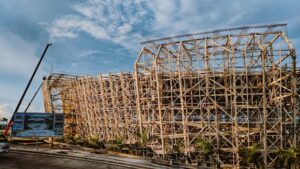Precision takes centre stage when it comes to construction. Many projects call for the use of steel structures given their versatility and strength. But their designs are becoming increasingly complex which calls for efficient detailing solutions. To optimise the construction process, industry leading software is used so that the detailers can achieve a high level of quality and performance.
Steel detailing software has undergone
A transformation in recent years due to advancements in technology. This is partly due to the growing complexity of many construction projects. The early stages of detailing software focused primarily on 2D drafting tools and this limited the ability of detailers to capture the full scope of complexity of the structure. But with modern software, they are able to use technologies such as parametric modelling, building information modelling and artificial intelligence in order to achieve high levels of efficiency, accuracy and collaboration. For example, when it comes to detailing of light gauge steel framing Melbourne, detailers and designers are able to create detailed 3D models of the structure which will carry precise details on connections, dimensions and material properties. They are no longer limited by traditional 2D drawings. This allows all stakeholders of the project to visualise the project which gives way to the identification of errors or conflicts. This way, you can make informed decisions early in the process before construction starts.

BIM or building information modelling has largely impacted
The way we plan construction projects. This goes for design and execution of steel buildings. Steel detailing software integrates with BIM platforms so that collaboration is facilitated across disciplines. This allows all professionals involved to share a common data environment whether it is engineers, architects, contractors etc. They can all work together to resolve conflicts, design changes and optimise the sequence of construction. Steel detailing enhanced by BIM software will streamline communication between parties and minimise errors. Advanced automation and optimisation tools are used to streamline repetitive tasks and this can help improve productivity of the process. Complex connection details can be generated and material utilisation can be optimised due to structural detailing tools. Machine learning and algorithms are used in order to accelerate the detailing process while still maintaining quality and accuracy.

When routine tasks are automated,
Detailers are able to focus their time on high value activities like analysing the constructability of the structure and optimising the design. A common error that can occur in traditional steel detailing is clashing of different building systems. But advanced software will help in carrying out clash detection and conflict resolution by overlying different building components and systems within the 3D model. This allows detailers to catch potential clashes before it occurs at site. This allows them to take a proactive approach when it comes to reducing rework and mitigating risks. It will contribute to a smooth construction workflow. There will be collaboration between the detailers and the project stakeholders so that conflicts can be quickly resolved which can help minimise delays.
